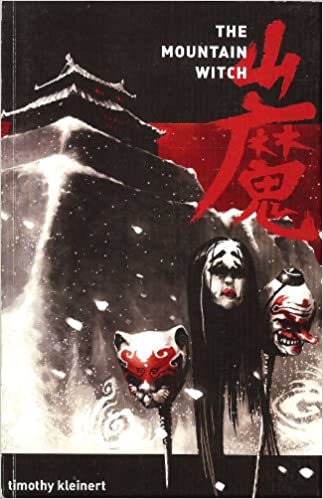I started to feel that I didn’t know roleplaying games well enough so I came up with the plan to read a roleplaying game corebook for every year they have been published. Selection criteria is whatever I find interesting.

The Mountain Witch is a roleplaying game in which a group of ronin attempt to storm the fortress of the titular mountain witch on the top of Mt. Fuji. It’s part of the Forge design movement and seeks to emulate classic samurai movies such as those by Akira Kurosawa.
Often, the design of roleplaying game is divided to roleplaying games and scenarios or adventures. A roleplaying game presents a mechanism for creating a specific type of play across multiple situations, the idea being that you can get lots of play by applying that basic system.
For example, Dungeons & Dragons presents rules for character creation, progression and combat. You can use those rules to play all kinds of stories, characters and situations as long as they fit the style of D&D.
In contrast, a scenario is a specific, pre-designed story or a situation. They are often published as supplements for existing roleplaying games. A scenario doesn’t have the same iterative value as a roleplaying game but it seeks to give the players and the GM the tools to run a specific, interesting, bespoke game experience.
The Mountain Witch is an unusual roleplaying game in the sense that it’s designed for the running of one specific scenario: the storming of the castle. In this, it’s significantly more focused compared to most other roleplaying games.
In a sense, the story of The Mountain Witch is very classic roleplaying game stuff. The characters are wandering violence-doers. They go into a fortress to kill the bad guy. A significant portion of all scenarios ever published are a variation of this.
However, in The Mountain Witch it becomes interesting because is just a framework to provide the characters with a reason to strive for something. The real focus is on the ronin themselves, the relationships between them, and their individual agendas. Of all the Forge games I’ve read, The Mountain Witch has the most resonance with the kind of character-based, emotion-seeking roleplaying style common in my particular scene.
The mechanics of the game play a lot on trust and betrayal, conflicting motivations between the ronin. Thus is makes the series of action encounters into an interpersonal drama, even suggesting that at the end the fight with the witch is not that important. The real payoff is in how the relationships play out.
As a mechanics note, there’s an interesting detail about dead characters. A character can die but the player can keep influencing play using game mechanics. In this way, the character’s memory affects those who are still living. I found it a great idea both conceptually and practically.
The game is permeated by Japanese culture. In the end, there’s even a guide to Japanese honorifics and a suggestion that these should be used during gameplay to denote relationships between characters. It’s an interesting case of incorporating a real-life language code into a game as part of its design.